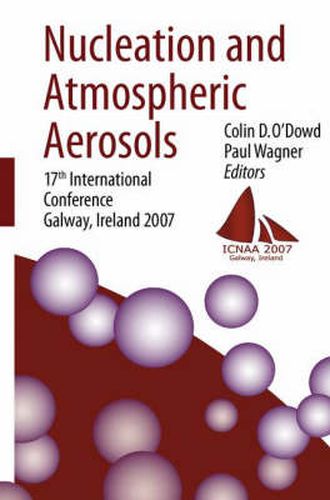Readings Newsletter
Become a Readings Member to make your shopping experience even easier.
Sign in or sign up for free!
You’re not far away from qualifying for FREE standard shipping within Australia
You’ve qualified for FREE standard shipping within Australia
The cart is loading…






Atmospheric particles are ubiquitous in the atmosphere: they form the seeds for cloud droplets and they form haze layers, blocking out incoming radiation and contributing to a partial cooling of our climate. They also contribute to poor air quality and health impacts. A large fraction of aerosols are formed from nucleation processes - that is a phase transition from vapour to liquid or solid particles. Examples are the formation of stable clusters about 1 nm in size from molecular collisions and these in turn can grow into larger (100 nm or more) haze particles via condensation to the formation of ice crystals in mixed phase or cold clouds. This book brings together the leading experts from the nucleation and atmospheric aerosols research communities to present the current state-of-the-art knowledge in these related fields. Topics covered are: Nucleation Experiment & Theory, Binary, Homogeneous and Heterogeneous Nucleation, Ion & Cluster Properties During Nucleation, Aerosol Characterisation & Properties, Aerosol Formation, Dynamics and Growth, Marine Aerosol Production, Aerosol-Cloud Interactions, Chemical Composition & Cloud Drop Activation, Remote Sensing of aerosol & clouds and Air Quality-Climate Interactions
$9.00 standard shipping within Australia
FREE standard shipping within Australia for orders over $100.00
Express & International shipping calculated at checkout
Atmospheric particles are ubiquitous in the atmosphere: they form the seeds for cloud droplets and they form haze layers, blocking out incoming radiation and contributing to a partial cooling of our climate. They also contribute to poor air quality and health impacts. A large fraction of aerosols are formed from nucleation processes - that is a phase transition from vapour to liquid or solid particles. Examples are the formation of stable clusters about 1 nm in size from molecular collisions and these in turn can grow into larger (100 nm or more) haze particles via condensation to the formation of ice crystals in mixed phase or cold clouds. This book brings together the leading experts from the nucleation and atmospheric aerosols research communities to present the current state-of-the-art knowledge in these related fields. Topics covered are: Nucleation Experiment & Theory, Binary, Homogeneous and Heterogeneous Nucleation, Ion & Cluster Properties During Nucleation, Aerosol Characterisation & Properties, Aerosol Formation, Dynamics and Growth, Marine Aerosol Production, Aerosol-Cloud Interactions, Chemical Composition & Cloud Drop Activation, Remote Sensing of aerosol & clouds and Air Quality-Climate Interactions